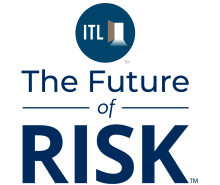Pity the poor underwriters.
They're having to estimate repair and replacement costs over the next year even though it's hard to know what U.S. tariff policies will be in a week. Any changes could radically alter costs for auto, homeowners and many other lines of insurance. And that's even before you start factoring in potential second- and third-order effects, such as possible sharp drops in employment and plunges in purchases of cars and homes, leading to a global recession.
I claim no crystal ball — and, like many, mistakenly thought Trump's first-term focus on the stock market would restrain him at least a bit from implementing tariffs that investors detest. But a recent article is helping me see a through line in what look like a scattershot series of actions and rationales. By explaining Trump's motivations, the article sheds some light on how long this tumult will last.
I'm sorry to say I'm less optimistic than I was before reading it.
It's certainly easy to be confused. Trump and some key advisers say he's just trying to negotiate reductions in trade barriers for U.S. goods — while others insist no negotiation is possible. Some say the goal is to produce a massive revenue stream, while others promote a contradictory goal: reviving American manufacturing. (The more goods are made in the U.S., the less the country imports and the less tariff revenue it receives.)
One goal — reviving masculinity in the U.S. through the hoped-for profusion of manufacturing jobs — is so far out in the future and depends on so many variables that it strikes me as really just designed to produce chyrons like the one on Fox's "The Five" on Monday. It read, "Trump's Manly Tariffs."
But a Stanford history professor writes in the New York Times that "there is order amid the chaos, or at least a strategy behind it. Mr. Trump’s tariffs aren’t really about tariffs. They are the opening gambit in a more ambitious plan to smash the world’s economic and geopolitical order and replace it with something intended to better serve American interests."
Jennifer Burns, who has written biographies of Milton Friedman and Ayn Rand, says the Trump plan "seeks to improve the United States’ global trading position by using tariffs and other strong-arm tactics to force the world to take a radical step: weakening the dollar via currency agreements. This devaluation, the theory goes, would make U.S. exports more competitive, put economic pressure on China and increase manufacturing in the United States."
Talk of weakening the dollar is wonky, so Trump, instead, makes impossible promises about eliminating the income tax and paying off the national debt, while his friends on Fox rhapsodize about "Manly Tariffs."
But the existence of a unifying theory suggests that Trump hasn't been entirely making this up as he goes along, despite his seeming fickleness. The plan suggests three other things, too -— none of them good for those poor underwriters or their employers:
- That the chaos caused by the tariffs could last quite a while. Trump knew the market would crash and went ahead anyway, so he's much less likely than in his first term to change course to appease investors.
- That prices of imported car parts, lumber, etc. will still surge even if tariffs are removed. Depending on how big a devaluation of the dollar Trump forces, the price of imports could be just as high, denominated in dollars, as if he'd slapped a 25% or so tariff on them.
- That the disruption will be profound if Trump actually goes all the way with his plan. Burns quotes one of the two architects of the economic plan as writing that U.S. military protection should be used as a bargaining chip during negotiations on getting countries to increase the value of their currencies. So the international military/security order could be convulsed at the same time that global trade is being turned upside down.
I'm still not convinced that Trump will be able to see his plan through to the end. Some of Trump's billionaire backers and some corporate leaders have begun to publicly criticize the tariffs. Even Elon Musk went after Peter Navarro, who has been a public face for Trump in arguing for tariffs. Some Republican senators have likewise complained, and Congress has the power to overturn the declaration by Trump of a national emergency that he's using to levy tariffs.
The incipient "Hands Off" movement says 150 groups organized 1,300 anti-Trump protests over the weekend, and some drew tens of thousands of people. The group has announced what it hopes to be an even bigger set of protests in two weeks. Polls show Americans souring on Trump's economic policies, and the big round of tariffs haven't even kicked in yet. (They apply starting on Wednesday, April 9.)
Given how completely Trump has cowed Republicans in Congress, it's hard to imagine a revolt on tariffs any time soon. But the closer we get to the midterm elections next year, the more likely it is that Republicans fearing an election loss could turn on Trump if his policies aren't improving people's lives. And it's almost impossible for major gains to show up that quickly. Building a factory and staffing it up can take years — it's not like Apple can just pull its business from China next week and start assembling them in the U.S.
Besides, what CEO is going to start planning to invest hundreds of millions or billions of dollars in U.S. factories while the new rules of the road aren't at all clear — and when a new president in 2029 could just reverse all the executive orders that Trump is using to define those new rules? It's not like CEOs want to build a factory, operate it for a year and then mothball it because it's again cheaper to do the work overseas.
Revolts tend to happen slowly, then suddenly, so it's not possible to know when so much pressure might build that Trump would wake up one morning, declare victory and move on. But insurers are stuck in a confusing mess in the meantime, and the trouble will linger even longer the more time that passes before some degree of certainty returns — and it seems that Trump is truly committed to tariffs in his second term.
Pity the poor underwriters.
Cheers,
Paul
P.S. Here is an interesting column by Karen Tumulty at the Washington Post on the historical roots of Trump's fascination with tariffs. She traces them to the 1980s and Chrysler CEO Lee Iacocca, who complained bitterly about what he called unfair advantages given to Japanese companies, which he said would let them hollow out the U.S. economy. Instead, the U.S. economy left Japan's in the dust in the 1990s, as its insular economy collapsed — but Trump remembers the complaints, not how history played out.
P.P.S. In other Elon Musk news, here is an update on his promised introduction of a fleet of robotaxis in June — a plan I've been updating you on and have been highly skeptical about. Some analysts say Tesla has made huge progress toward full autonomy over the past three years, but they also say the company is nowhere close to being ready for full autonomy in two months. Here is a related, 25-minute video from CNBC that shows you what Teslas can and can't do. Again, there's plenty of praise, but the money quote is from Philip Koopman, a professor at Carnegie Mellon University and an authorty on AV safety. He says of Teslas: "Without a human driver, they're completely unsafe."


